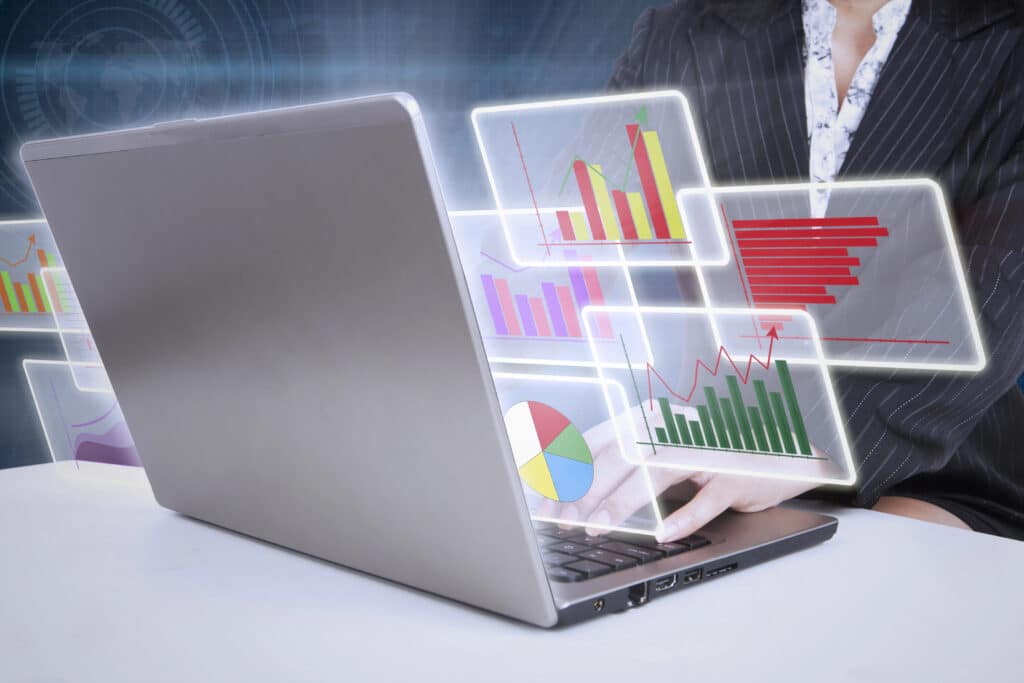Navigating the Data Journey: The Right Technologies for Success
This 6 steps guide will help you navigate your data journey and share how Microsoft's platform of technologies can supercharge each stage.
Table of Content
41% of companies say they struggle to turn data into decisions. This is because getting good ideas from data that hasn’t been properly “handled” is nearly impossible. The data journey is a series of steps or stages for handling your organization’s data—leading it to its ultimate, highest, and best use. This journey involves tools and processes to ensure that data is collected, processed, analyzed, and visualized in ways that support decision-making. Successfully navigating the data journey is essential for turning raw data into meaningful insights.
Velosio sees the journey as six distinct steps, each with its unique role, significance, and enablers. Here, we’ll introduce you to those steps and share how Microsoft’s platform of technologies can supercharge each stage.
During stages 1 and 2, organizations are able to ask, “What Happened and why?” During stages 3 and 4, organizations can ask, “What may or is likely to happen?” and during stages 5 and 6, organizations are able to ask, “What will happen, when will it happen, and why will it happen?”
The journey is best described as a progression from data that supplies reactive information toward data that informs proactive decision-making. In most organizations, these steps will overlap, repeat, or vary in sequence based on the specific use case and the stakeholders involved. For example, it will always be helpful to know what has happened (Reporting), even as you look to predict what will happen next (Predictive Insights). Keep in mind that the ultimate goal of the data journey is to extract business value from data in efficient, reliable, and reproducible ways.
Now, let’s dive deeper into each step of the data journey to see how Microsoft technologies, including Power BI, Azure Data Lake Storage, and Azure Synapse Analytics, keep you—and your business data—headed in the right direction.
Imagine you’re a distribution company that wants to gauge monthly product shipments. Power BI allows you to aggregate and present this data in vivid visual formats like charts or heat maps. This could, for instance, allow you to visualize regional shipment densities or identify zones with maximum dispatches. Such insights can be vital for logistical planning, resource allocation, and strategic decision-making. For instance, if a particular zone consistently has high dispatches, you might decide to increase its warehousing capacity in that area or optimize its supply routes to serve that region more efficiently.
Sticking with our distribution company example, consider a scenario with a sudden surge in product returns from specific regions. Using Azure Data Lake Storage, you can pool together years of distribution data and embark on a deep analytical venture. For example, you could discern if the product returns correlate with a specific batch of products, a particular transport partner, or a specific time of the year. With such granular insights, you can target effective corrective measures.
Every distribution company knows the importance of real-time monitoring. For instance, monitoring the real-time status of a fleet or inventory levels is pivotal. Power BI undertakes this type of continuous vigil without complaint. Let’s say a vehicle in your fleet experiences unexpected delays. Real-time monitoring could immediately flag this, allowing you time to reschedule or redirect goods to maintain on-time deliveries.

Successful distribution companies understand the value of accurate forecasting—leveraging past data to anticipate future demands. With Azure Synapse Analytics, you can, for example, predict which products are likely to see a surge in demand during the holiday season. This predictive ability gives you time to stock up adequately, preventing stock-outs and ensuring you can meet customer demand.
Building upon forecasting, Predictive Insights bring in a more refined perspective. Your distribution company could use insights from Azure Data Lake Storage and analytics from Azure Synapse to predict potential supply chain disruptions based on historical data about weather events, strikes, or geopolitical tensions. Such foresight can be invaluable, allowing you to proactively strategize alternative routes or backup plans.
Here’s where you move from prediction to action. Suppose a scenario where predictive insights indicate a likely supply chain disruption due to an impending transport strike. With Power BI visualizing potential outcomes and Azure Synapse Analytics modeling various scenarios, you can evaluate strategies like preponing shipments, using alternative transport modes, or even rerouting through different regions. The result? Data-backed decisions that ensure business continuity.
Above, we’ve highlighted the individual Microsoft services that support your company’s data journey, but we’d be remiss to ignore one additional “super service” that unites many of the individual services into a compelling analytics platform.
Microsoft Fabric is an end-to-end, AI-powered, unified analytics platform that combines all the data and analytics tools your organization needs. Fabric integrates technologies like Azure Data Factory, Azure Synapse Analytics, Data Activator, Power BI, and Azure Data Lake Storage into a single unified platform, creating the industry’s most comprehensive data and analytics platform.
The data journey is a structured approach to visualizing and harnessing the power of your business data. Using the Microsoft suite of technologies and Velosio’s experience and expertise, you can ensure your business is well-equipped at every stage, from initial reporting to prescriptive insights. Reach out to our consulting team to get started.
Talk to us about how Velosio can help you realize business value faster with end-to-end solutions and cloud services.
"*" indicates required fields